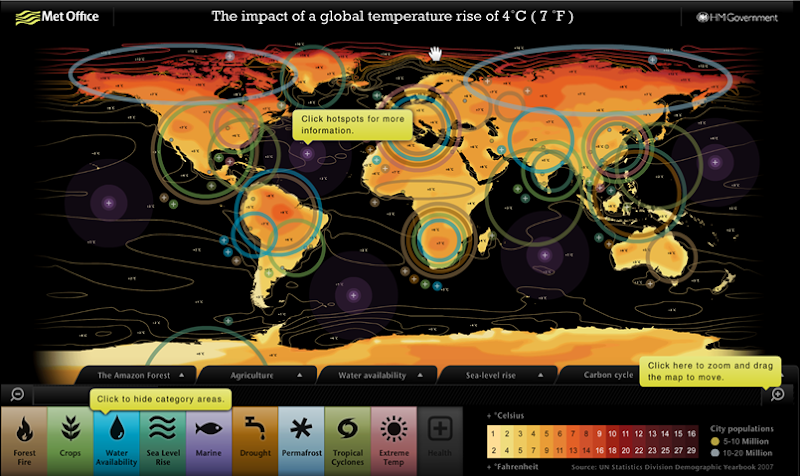Graph of the Day: Impact of a Global Temperature Rise of 4°C (7°F)
A new map illustrating the global consequences of failing to keep temperature change to under 2 °C was launched today by the UK Government, in partnership with the Met Office. The map was developed using the latest peer-reviewed science from the Met Office Hadley Centre and other leading impact scientists. The poster highlights some of the impacts that may occur if the global average temperature rises by 4 °C above the pre-industrial climate average. Ahead of December’s international climate change talks in Copenhagen, the Government is aiming for an agreement that limits climate change as far as possible to 2 °C. Increases of more than two degrees will have huge impacts on the world. The poster shows that a four degree average rise will not be spread uniformly across the globe. The land will heat up more quickly than the sea, and high latitudes, particularly the Arctic, will have larger temperature increases. The average land temperature will be 5.5 degrees above pre-industrial levels. The impacts on human activity shown on the map are only a selection of those that may occur, and highlight the severe effects on water availability, agricultural productivity, extreme temperatures and drought, the risk of forest fire and sea-level rise Agricultural yields are expected to decrease for all major cereal crops in all major regions of production. Half of all Himalayan glaciers will be significantly reduced by 2050, leading to 23% of the population of China being deprived of the vital dry season glacial melt water source. The Foreign Secretary, David Miliband said: “We cannot cope with a four degree world. This map clearly illustrates the scale of the challenge facing us today — climate change is a truly global problem that needs a global solution and it is a solution we have within our grasp.” …
